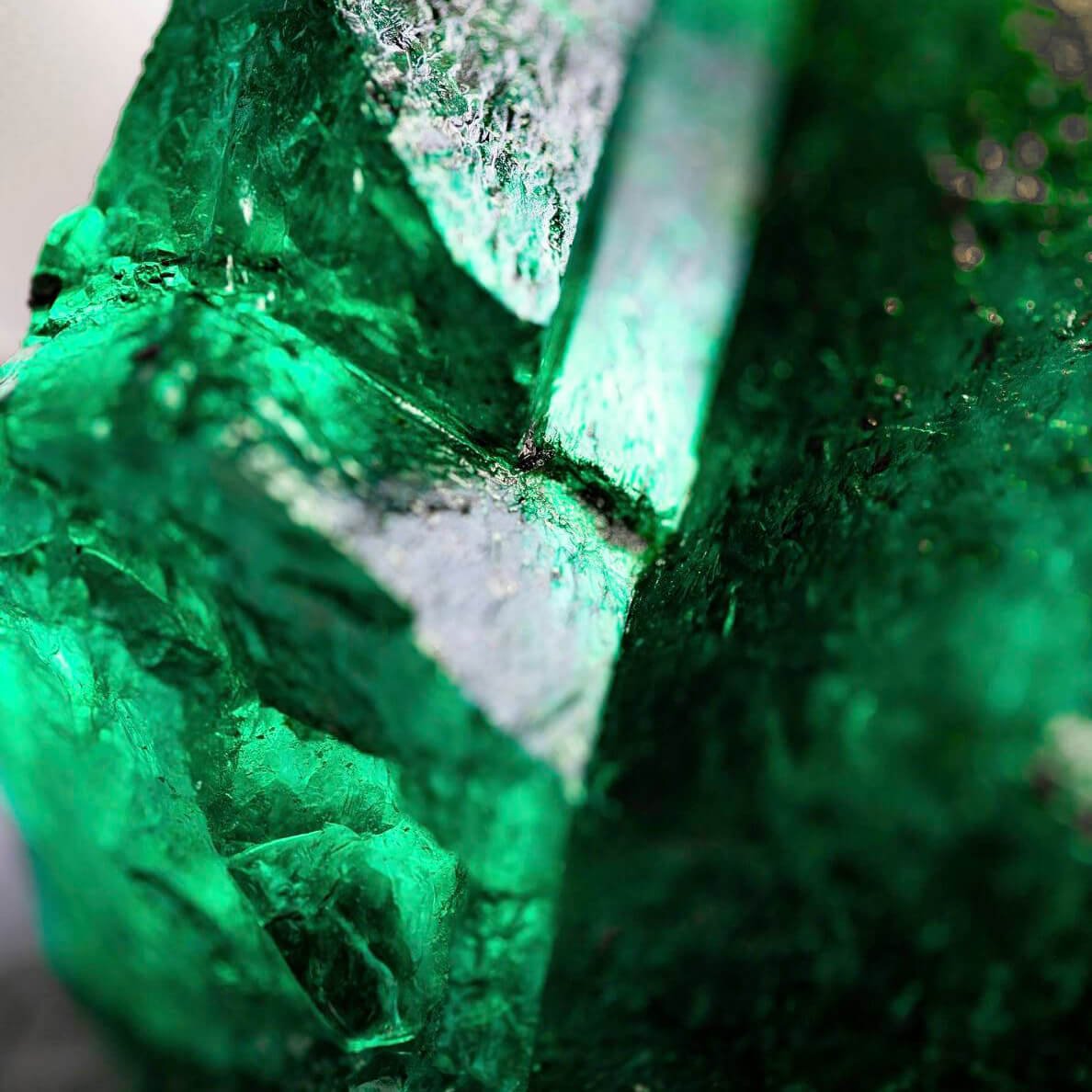Emerald
- Be3Al2(SiO3)6
- Type: Gemstone

- Colour: Bluish green to green
- Mohs Hardness: 7.5
- Lustre: Vitreous: This luster resembles broken glass, offering a bright and glassy shine. It's common in transparent and translucent minerals like quartz or calcite.
Share:
General Information
Emerald is a precious gemstone and a variety of the mineral beryl colored green by trace amounts of chromium or sometimes vanadium. Most emeralds have much material trapped inside during the gem’s formation, so their toughness (resistance to breakage) is classified as generally poor. Emerald is a cyclosilicate.
Zambia is the second largest producer of emeralds in the world. In 2021, the worlds largest uncut emerald was unearthed from kagem mine and named, ‘Chipembele’ or Rhino. It measures 7,525 carats (1.505kg).
Zambia is the second largest producer of emeralds in the world. In 2021, the worlds largest uncut emerald was unearthed from kagem mine and named, ‘Chipembele’ or Rhino. It measures 7,525 carats (1.505kg).
Value
Emeralds, like all colored gemstones, are graded using four basic parameters known as “the four Cs”: color, clarity, cut and carat weight. Normally, in grading colored gemstones, color is by far the most important criterion. However, in the grading of emeralds, clarity is considered a close second. A fine emerald must possess not only a pure verdant green hue as described below, but also a high degree of transparency to be considered a top gemstone.
Application
Emerald gemstones are very well sought after as they are precious gemstones used in valuable jewelry.
Location
Processing
Here’s a breakdown of emerald mining methods used in Zambia:
Open-pit mining: This is the dominant method employed in Zambian emerald mines. It involves using heavy machinery to remove the top layer of soil and rock, exposing the emerald-bearing zones below. Once exposed, the emeralds are carefully extracted by hand or with smaller equipment.
Hand-pit mining: This artisanal method involves individual miners or small teams digging pits and tunnels to reach the emerald-bearing layers. While offering some economic opportunities, it can be dangerous and lacks the efficiency of large-scale operations.
Underground mining: This method is less common in Zambia’s emerald mines due to the relatively shallow location of the deposits. However, it might be used in specific areas where the emerald-bearing zones extend deeper underground.
Open-pit mining: This is the dominant method employed in Zambian emerald mines. It involves using heavy machinery to remove the top layer of soil and rock, exposing the emerald-bearing zones below. Once exposed, the emeralds are carefully extracted by hand or with smaller equipment.
Hand-pit mining: This artisanal method involves individual miners or small teams digging pits and tunnels to reach the emerald-bearing layers. While offering some economic opportunities, it can be dangerous and lacks the efficiency of large-scale operations.
Underground mining: This method is less common in Zambia’s emerald mines due to the relatively shallow location of the deposits. However, it might be used in specific areas where the emerald-bearing zones extend deeper underground.
No donation to this project yet.
| M | T | W | T | F | S | S |
|---|---|---|---|---|---|---|
| 1 | 2 | |||||
| 3 | 4 | 5 | 6 | 7 | 8 | 9 |
| 10 | 11 | 12 | 13 | 14 | 15 | 16 |
| 17 | 18 | 19 | 20 | 21 | 22 | 23 |
| 24 | 25 | 26 | 27 | 28 | 29 | 30 |
| 31 | ||||||

